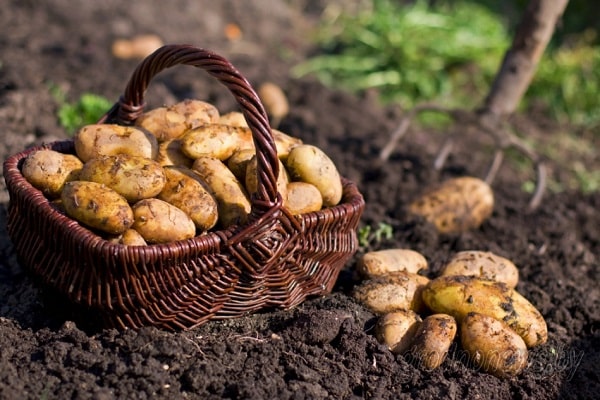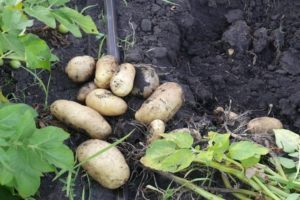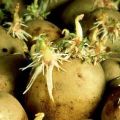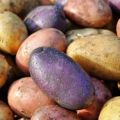Description of the potato variety Zorachka, features of cultivation and care
Zorachka potatoes are planted in Russia, Ukraine and at home. Bred by breeders from Belarus, it takes root on any soil, gives a good harvest. Summer residents like this variety for the opportunity to use tubers for frying, for making soups and borscht, casseroles, salads.
Boiled new potatoes serves as one of the favorite dishes in many families. The vegetable is rich in pectin substances, contains proteins, glucose, vitamins, amino acids. The pulp contains about 14% starch.

Description of the variety
Potatoes of the Zorachka variety begin to be dug 45 days after the sprouts emerge from the ground. If the crop is harvested after 2.5 months, the tubers do not rot, do not lose their taste, and during transportation they retain their presentation until mid-winter.
This characteristic of the Zorachka variety allows you to plant potatoes not only in small summer cottages for your own consumption, but also in spacious fields. Farmers grow root crops for sale.
10 or even 12 tubers are dug from a low, upright bush with thick dark green leaves, each of which has:
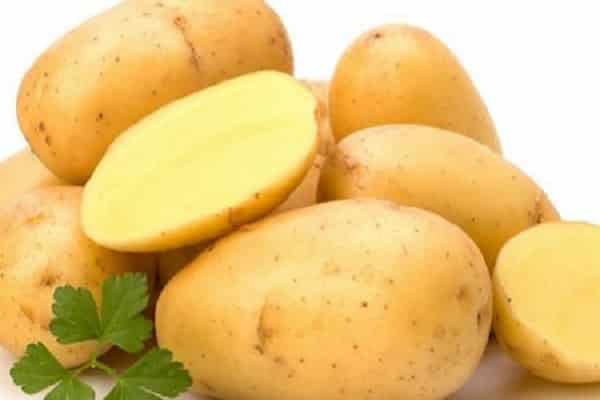
- oval shape;
- smooth peel;
- small eyes;
- yellow pulp;
- rich taste.
One root vegetable weighs up to 120 g, 250–350 centners of the crop can be harvested per hectare, with proper care about 700. The potato variety Zorachka is resistant to some diseases, but does not tolerate heat and drought. Most of all, the culture is suitable for a climate where there are no high temperatures, enough moisture.
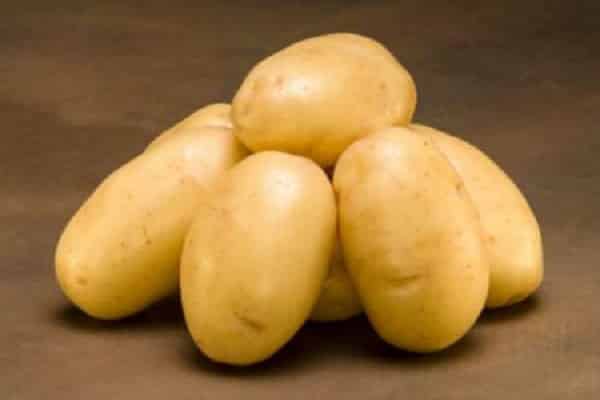
Growing
The Zorachka variety has gained popularity among summer residents in a short time. Basically, it is planted for the sake of delicious young potatoes, which can be consumed as early as June. The culture will please with its yield only with careful selection of the seed. The size of the tubers should not be larger than the egg, there should be no rot and damage. The potatoes are kept in a warm place until they dry out. Then they are sent to the cellar, where they are stored separately from the harvested crop.
To check the germination capacity, the tubers are placed in a solution prepared from 10 liters of water and 0.5 liters of urea. If they do not float, these potatoes can be planted in the garden.
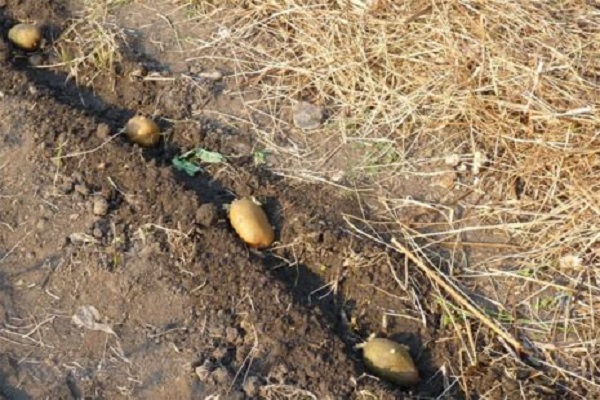
Site preparation
10 days before planting, the roots are placed in boxes and sprinkled with wood shavings. Wooden containers are placed in a room where the temperature is at least 20 degrees. Germinated tubers are treated with fungicides or potassium permanganate solution. A bed for Zorachka potatoes is prepared in the place where they used to grow:
- cucumbers and cabbage;
- beans and beans;
- carrots and mustard;
- lupine and cereals.
Since autumn, a bucket of peat and humus is added to the clay soil.If you carefully read the description of the variety, it will be clear that these potatoes do not grow well in acidic lands. In this case, lime will have to be added to the soil. Sandy soil can be slightly diluted with clay, mixed with humus.
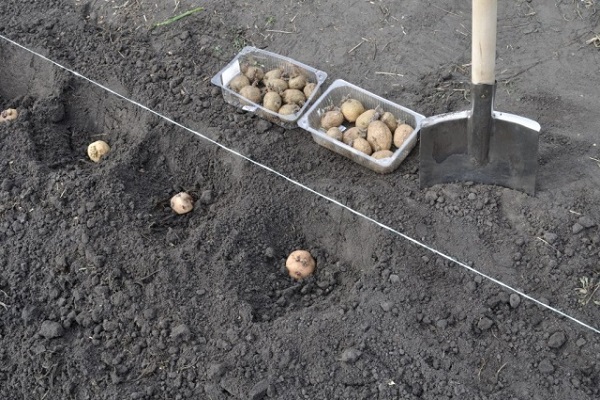
The holes are marked every 40 cm, half a meter is left between the rows. Pour into a hole 10 cm deep:
- superphosphate;
- ash;
- peat.
The first 2 components are put in a spoon, the third is enough 150 g. In order for the potato tubers not to become smaller, the culture rewarded a decent harvest, it is necessary to apply fertilizers. Fresh manure is not suitable for this purpose, root crops will grow tasteless.

Top dressing
When sprouts appear in a bucket of water, you need to stir 20 grams of urea and 60 special additives, pour each bush with this solution. When buds are formed, potassium sulfate and ash are added to the soil under the crop.
When Zorachka potatoes are blooming, nitroammophoska and superphosphate are used for feeding. Such fertilizers are sold in markets and specialized stores.
A couple of times a season, the bushes of the plant are sprayed with a solution that is prepared by mixing Bordeaux liquid and potassium sulfate.
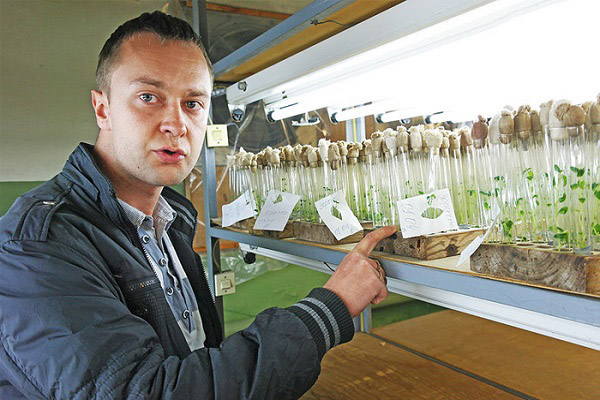
Care features
Bushes will quickly develop and grow if they are hilled in time, moisten the earth. To harvest an excellent harvest of Zorachka potatoes, it is advisable to study the description of the rules of care thoroughly:
- Seven days after planting the seed in the garden, you need to walk with a rake, loosening the soil.
- When shoots appear, weeds must be removed with a hoe.
- When the bush rises 20 cm, it is covered with soil. This work is done twice a season after rain or watering.
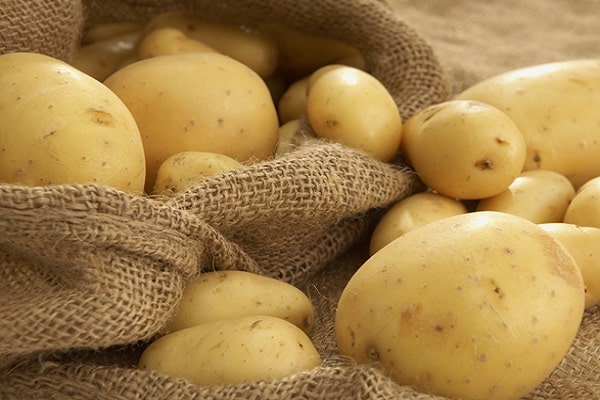
The Zorachka variety has its own characteristics. He does not tolerate drought. On a hot day, the leaves curl and wither. In the middle lane, abundant hydration is necessary when the potatoes rise, bud and bloom. Each bush needs 3 liters of water. It is poured into holes or between rows. When the earth dries up, they begin to loosening. This type of moistening is preferable to sprinkling, since it excludes infection of the culture by fungi.
Farmers and many summer residents install drip irrigation, which is most suitable for growing Zorachka potatoes. Thereby:
- roots develop faster;
- leaves are not affected;
- moisture is saved;
- the water heats up well.

Excessive watering also negatively affects the condition of the plants. At the bottom of the stems, spots with a whitish bloom are formed. Root crops are affected by rot, taste deteriorates.
Advantages and disadvantages
Summer residents, who prefer to plant Zorachka, note the excellent taste of young potatoes, the absence of wateriness, the ability to use it for cooking and frying. The important advantages of the variety include:

- early maturation;
- easy care;
- excellent keeping quality;
- excellent taste;
- unpretentiousness to the soil.
Bushes are not affected by nematodes. The plant is not afraid of late blight, does not suffer from potato cancer. A serious drawback of this nightshade crop is the special watering requirement.
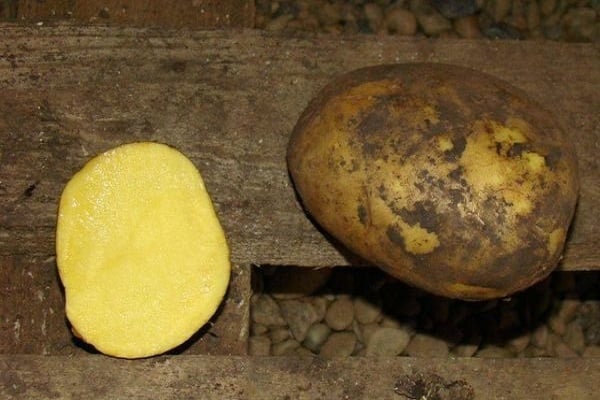
Diseases and pests
To grow large, smooth-skinned root vegetables, you need to fight insects. Medvedka makes holes in the tubers, making them unusable. It is not easy to cope with it, but it is quite possible by flooding the places of movement with laundry soap, putting thorny needles in the holes.
They cause huge damage to the crop yield:
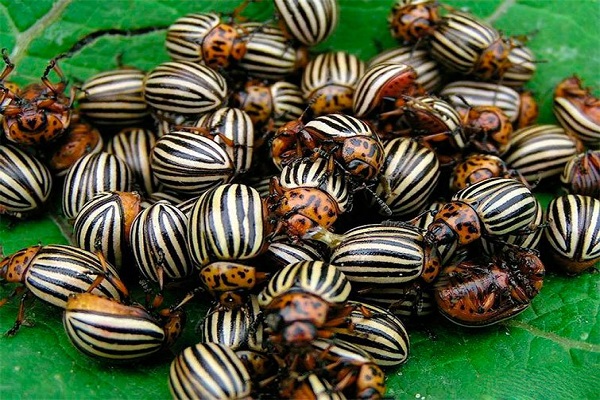
The gluttonous striped insect eats both leaves and tops. You can destroy larvae, eggs and adults by spraying the bushes with Mospilan, Karate, Calypso preparations. To cope with the potato moth, the plants are treated with the Bancol insecticide. Careful digging of the roots of previously planted crops and weeds from the garden helps to prevent the appearance of spider mites.
Tubers of the Zorachka variety begin to rot if the plant is affected by scab and late blight. So that the potatoes do not get sick when planting, you need to adhere to the rules of agricultural technology, treat the seed material with fungicides or potassium permanganate.

Harvesting and storage
Tubers of an early variety Zorachka are dug out on young potatoes one and a half months after the growing season. Farmers sell it in the market for a good profit. Before harvesting for storage, which is done after another 30 days, the tops are cut off, left on the most developed bushes, from which the seed is harvested. The potatoes dug out at this time are dried and placed in the basement or cellar.
Summer residents and gardeners love to grow the Zorachka variety, because it is quite unpretentious in care, undemanding to the fertility of the land, the tubers have an excellent taste, ripen quickly, and are good for cooking and frying.
